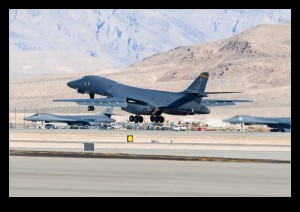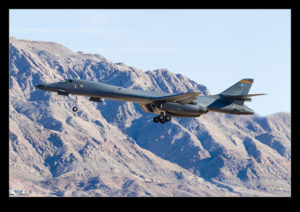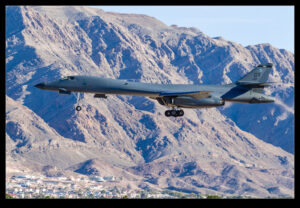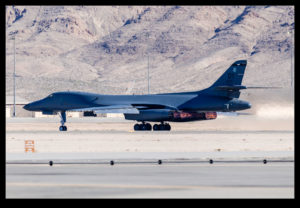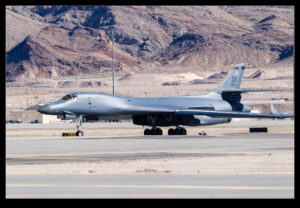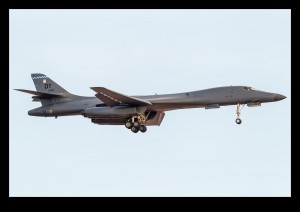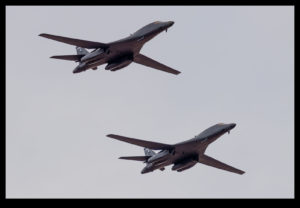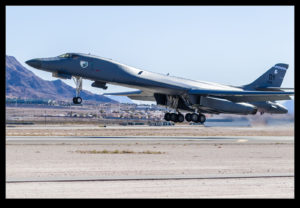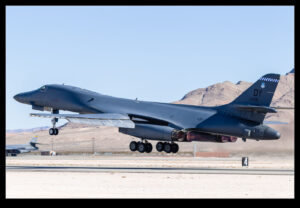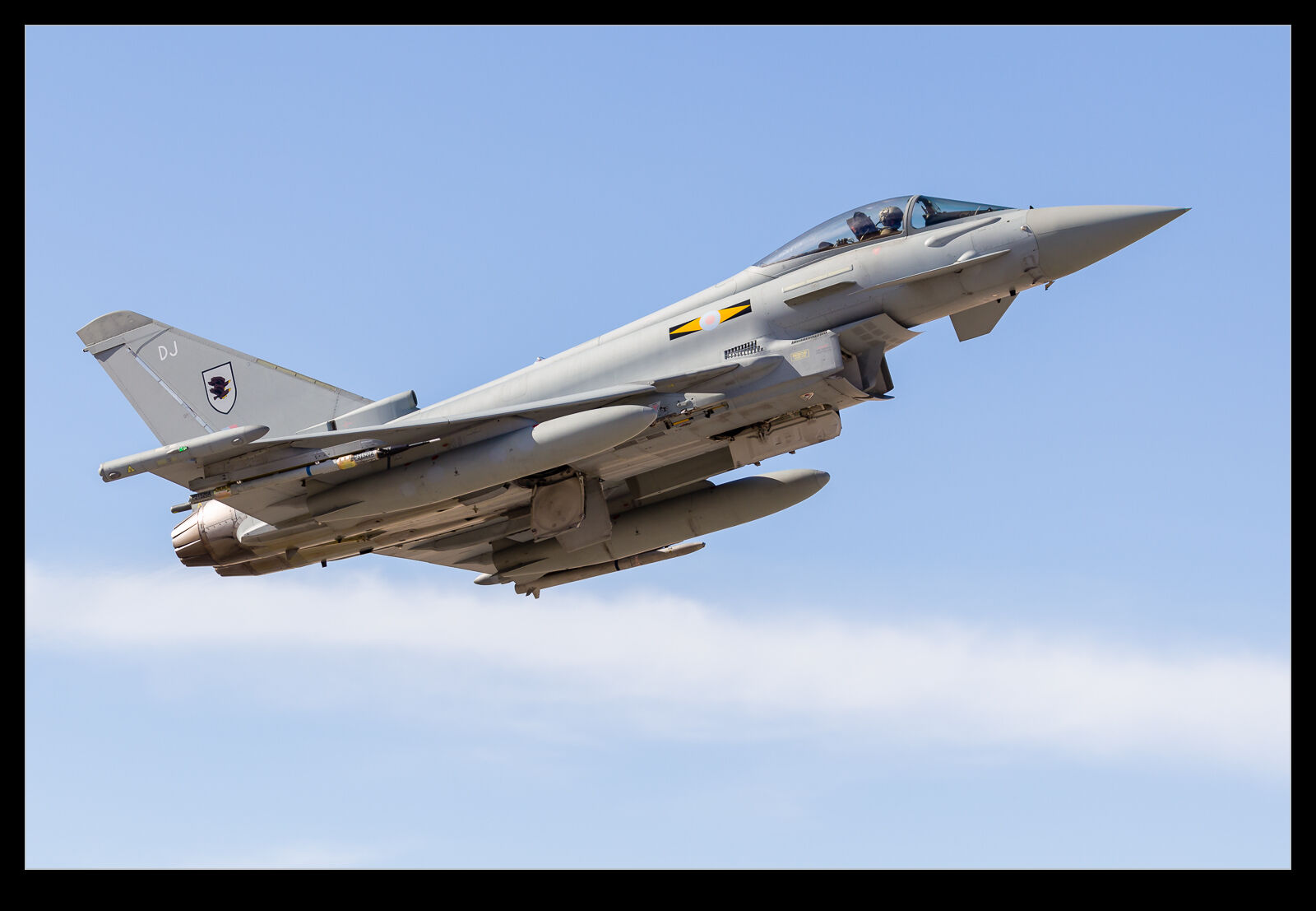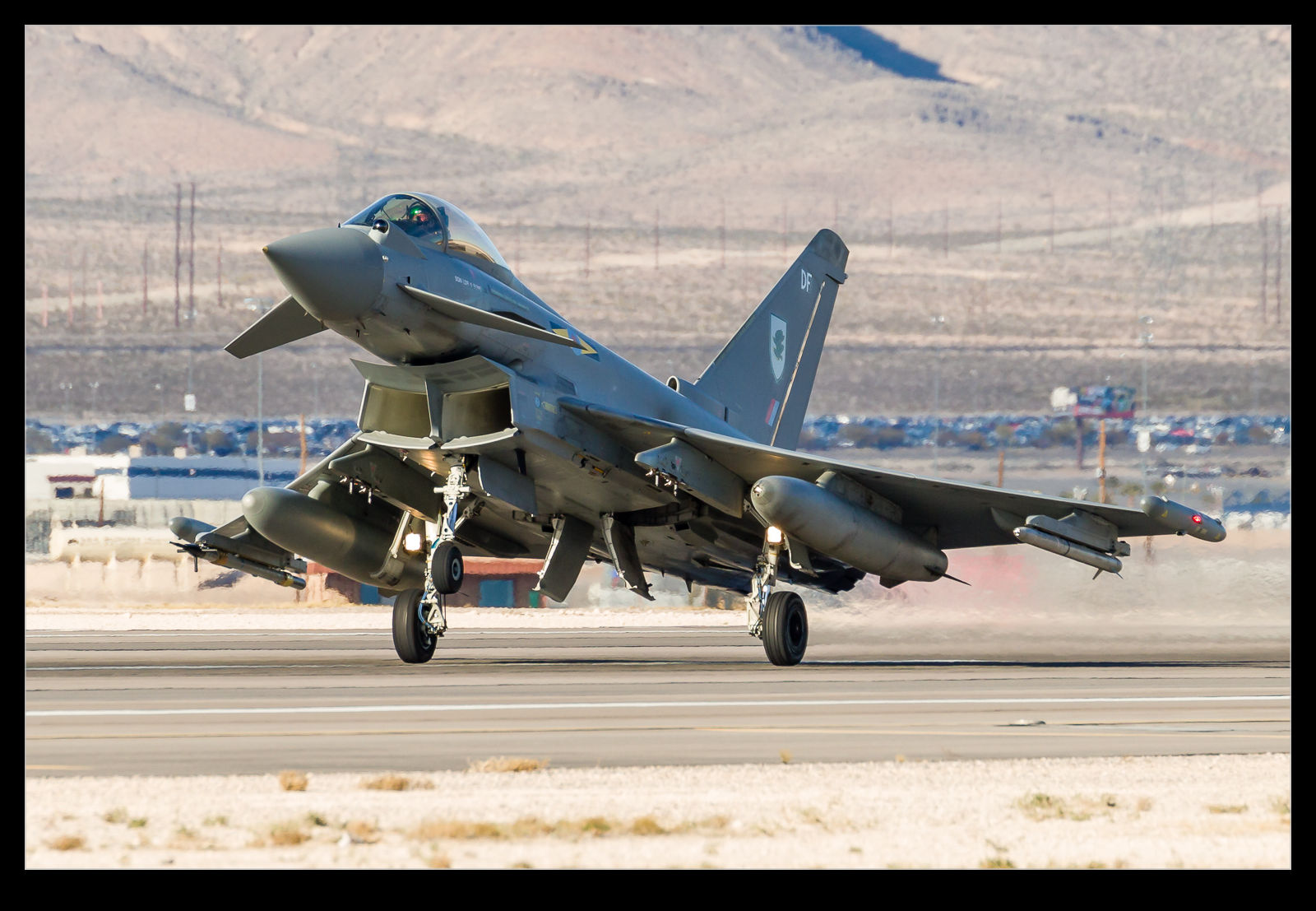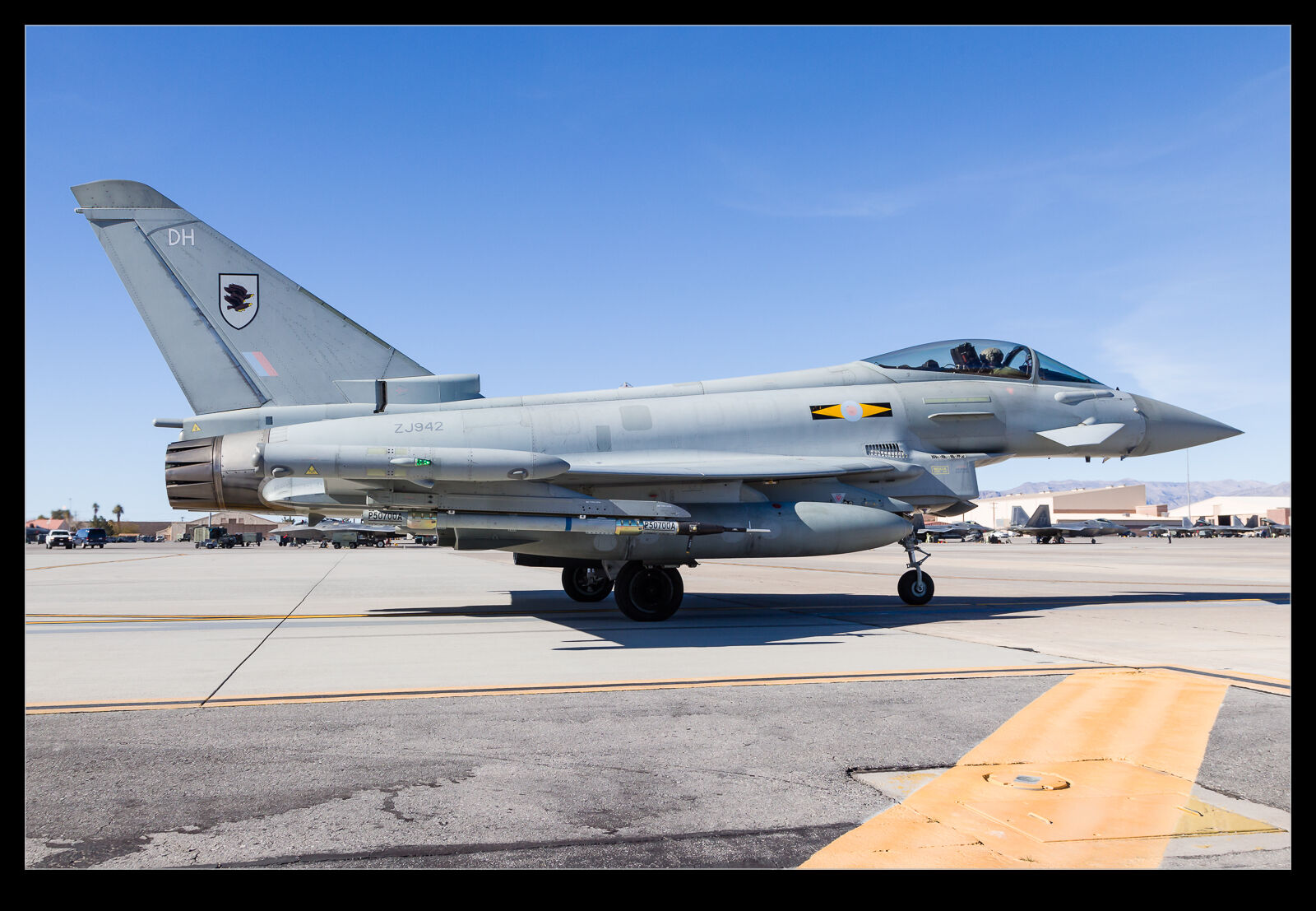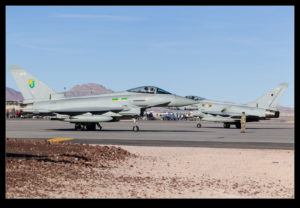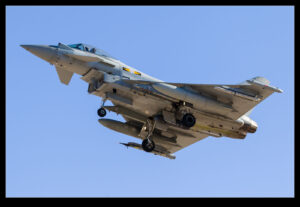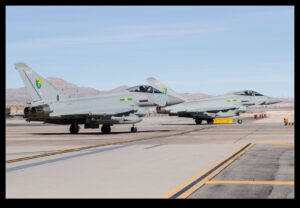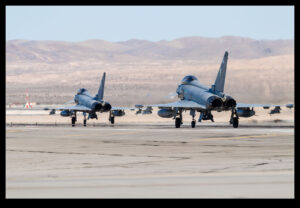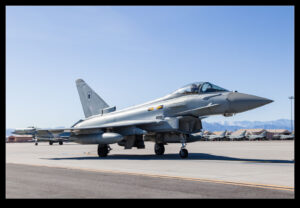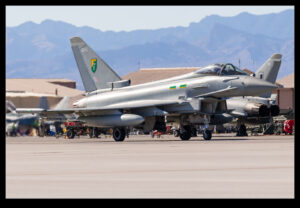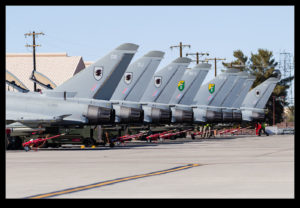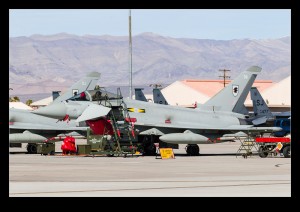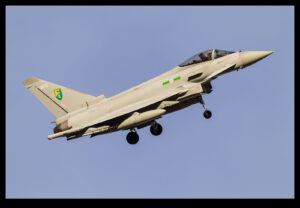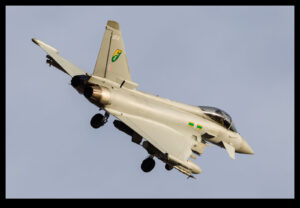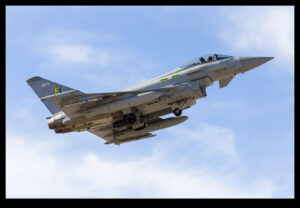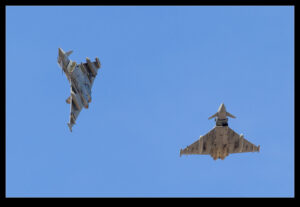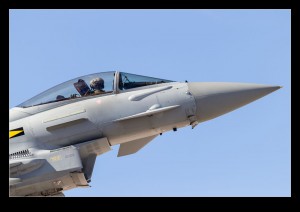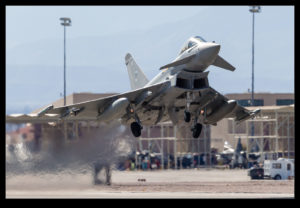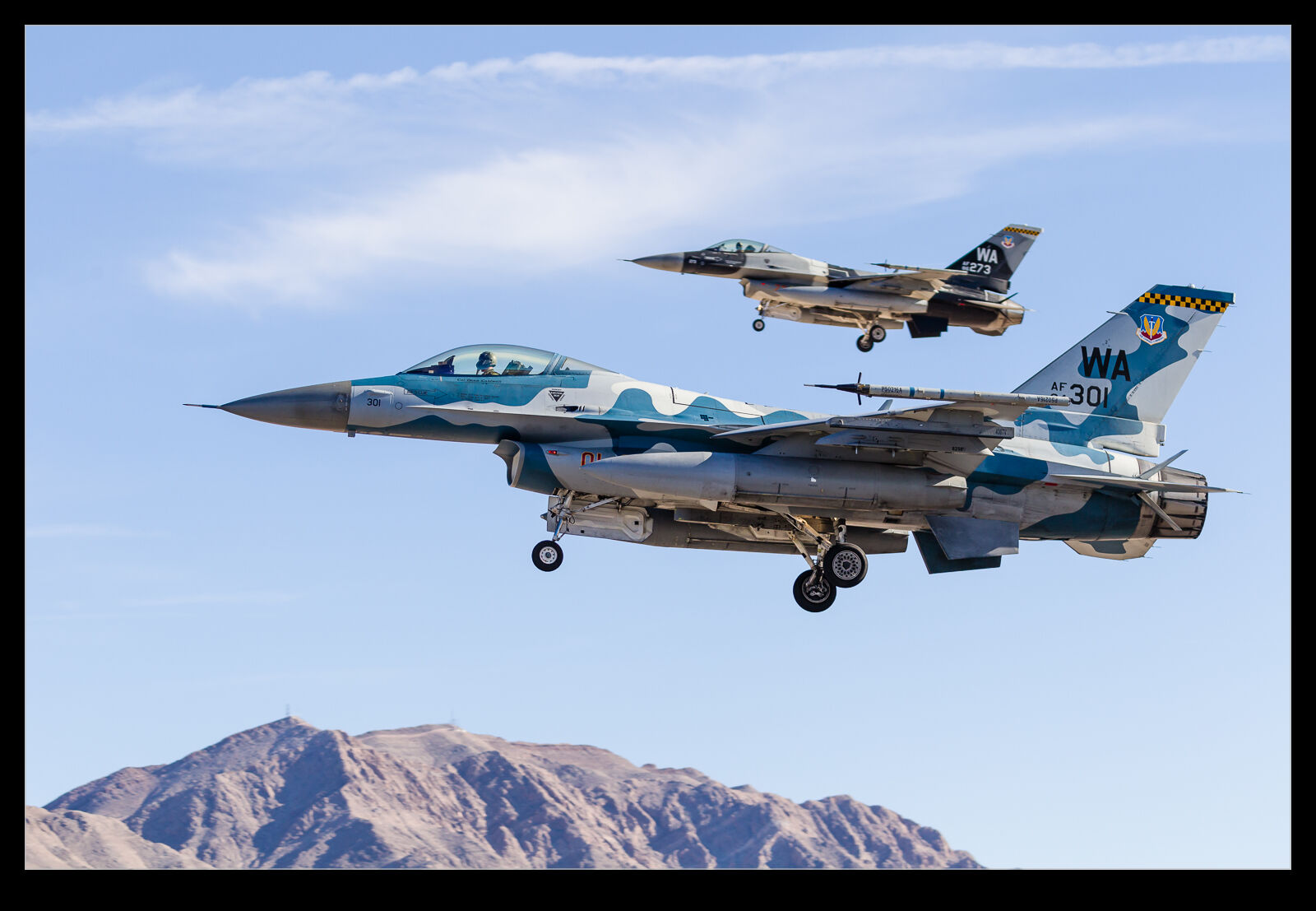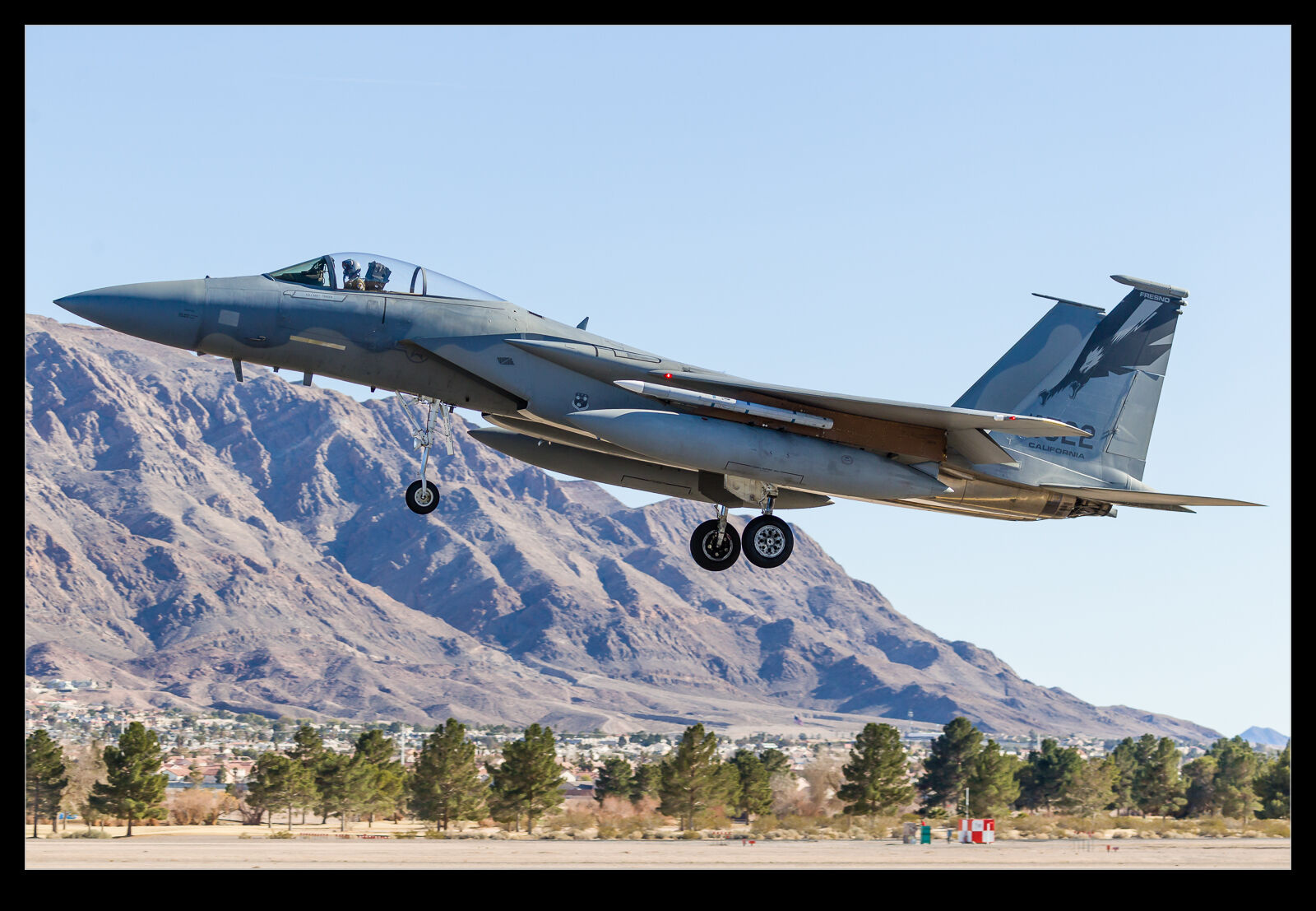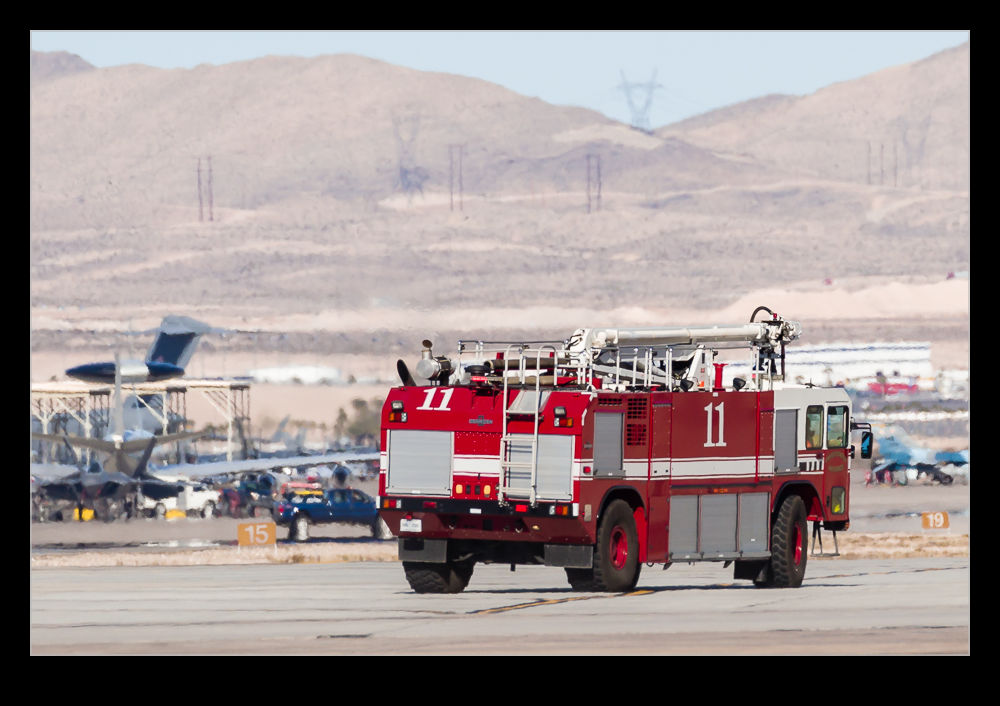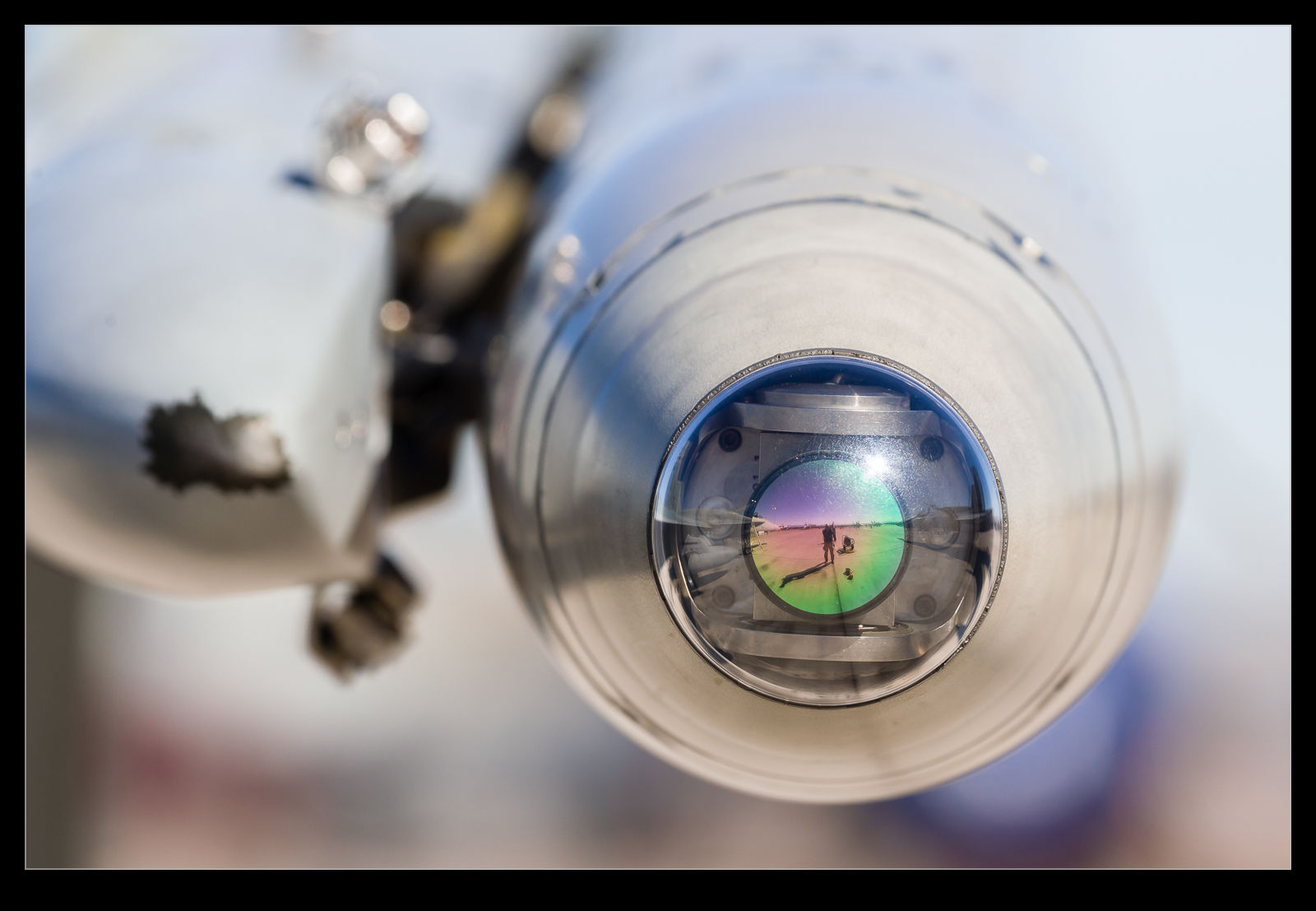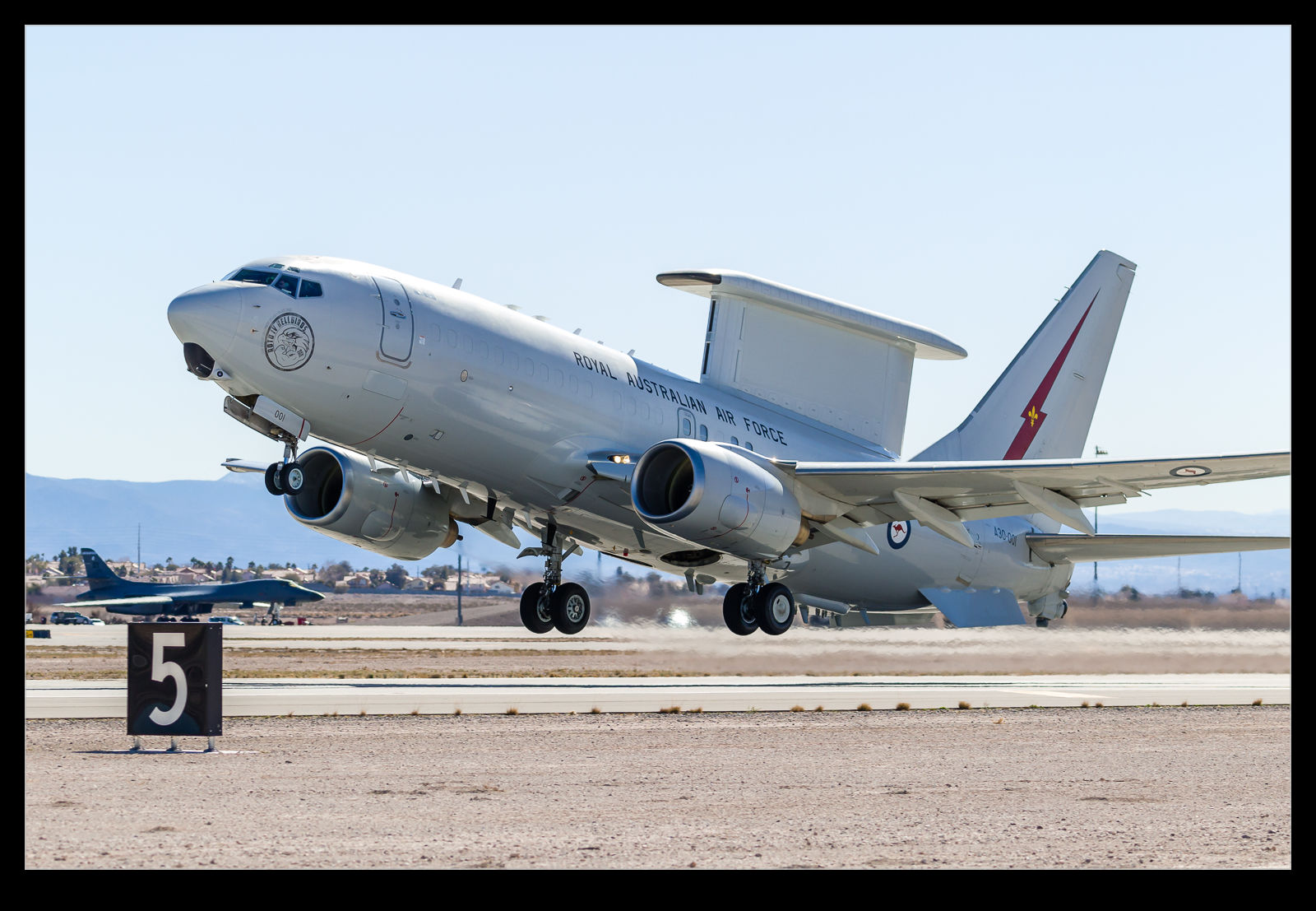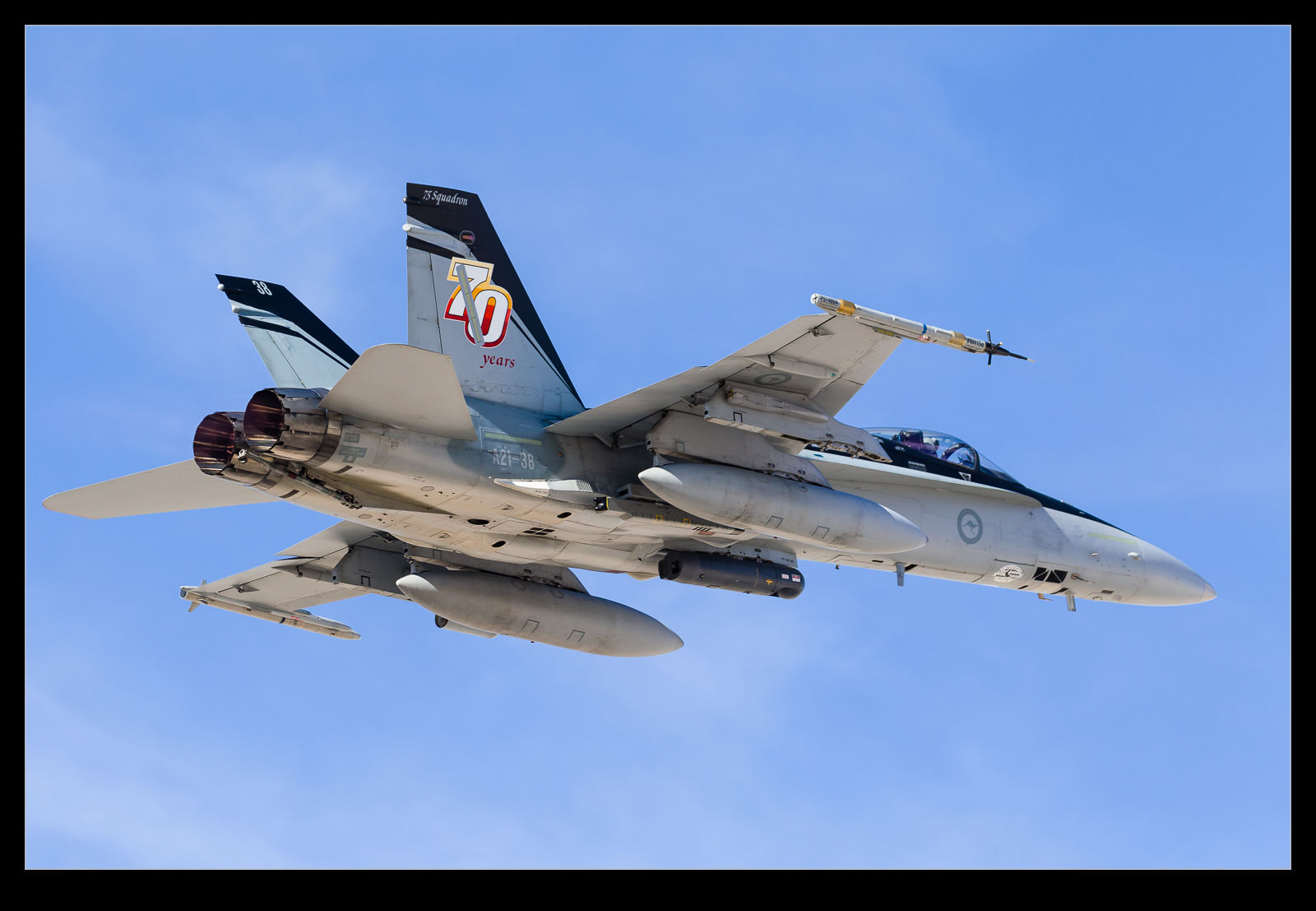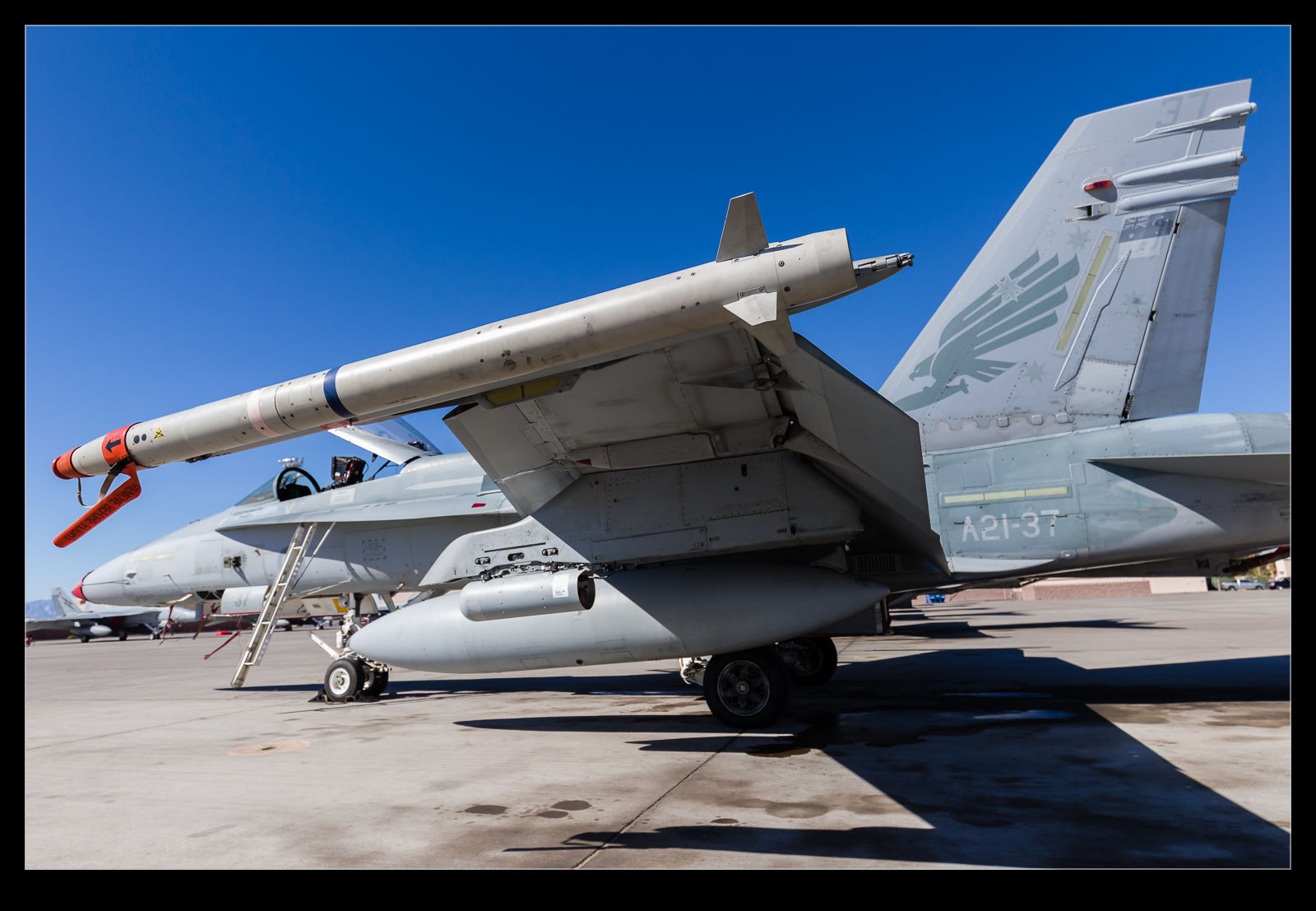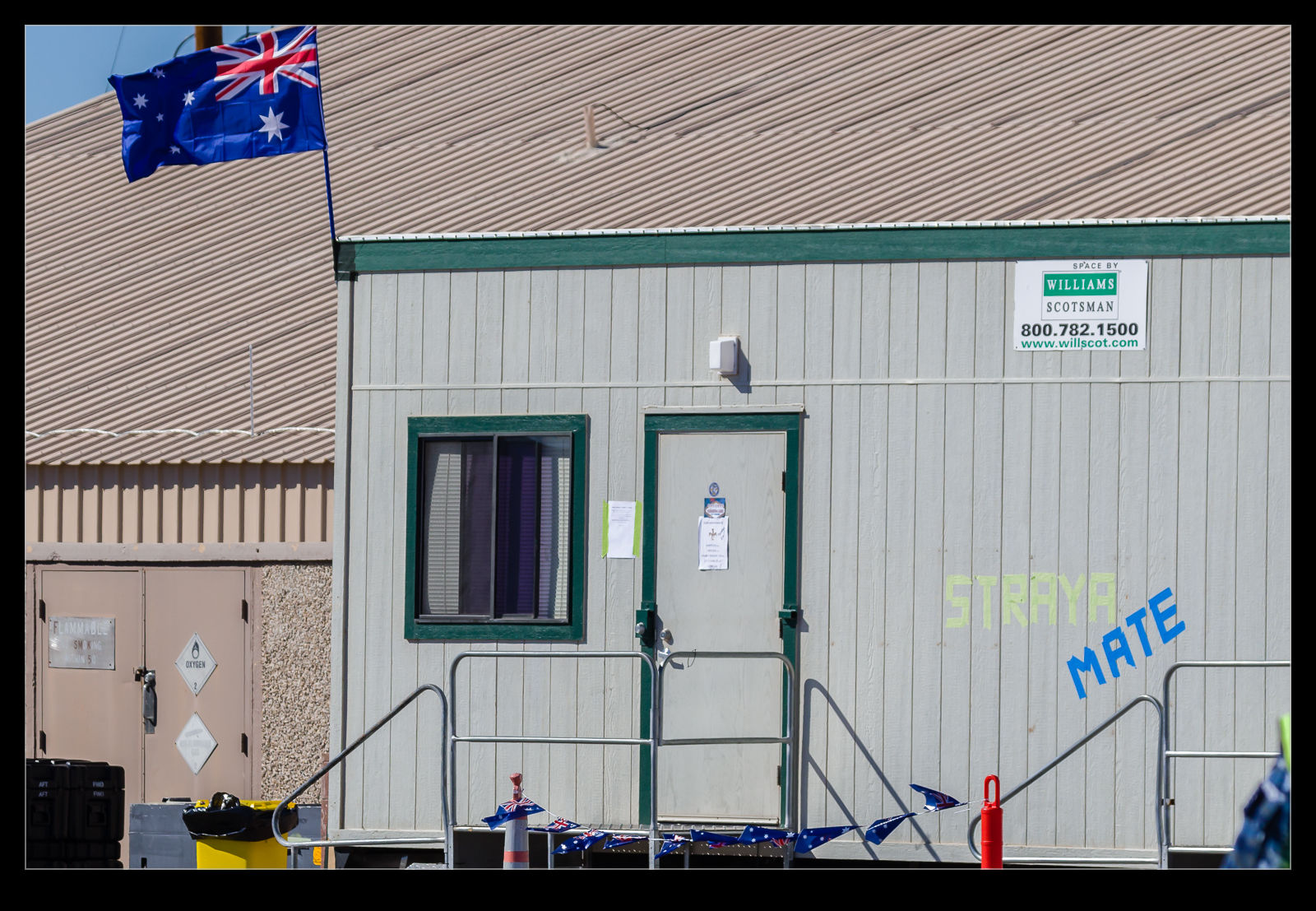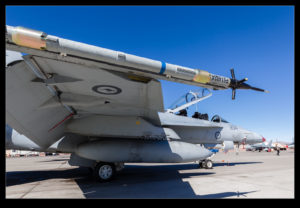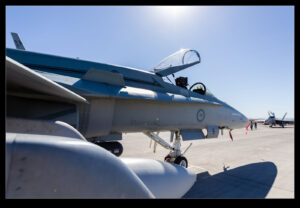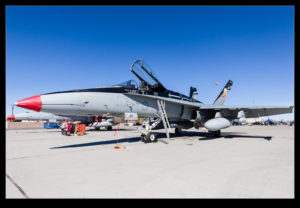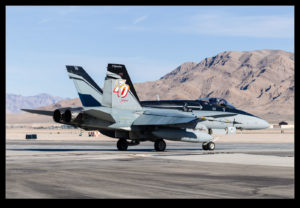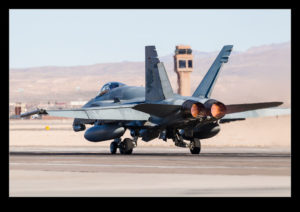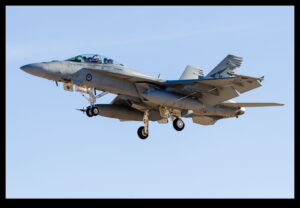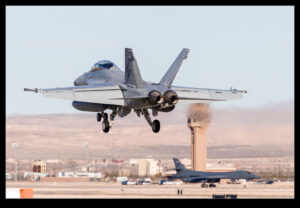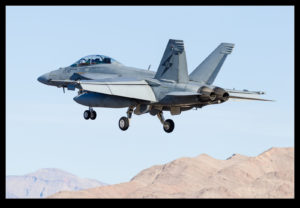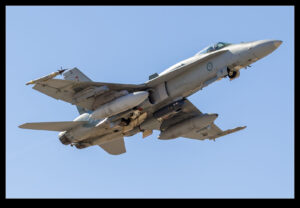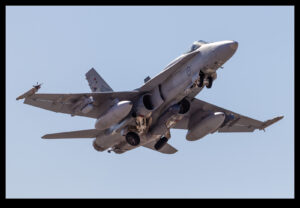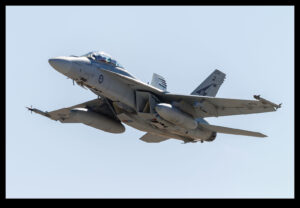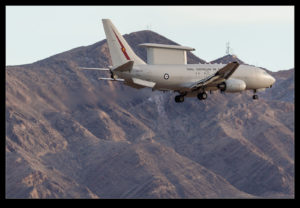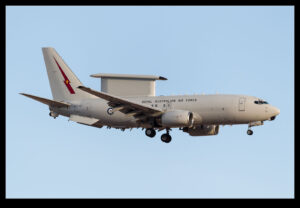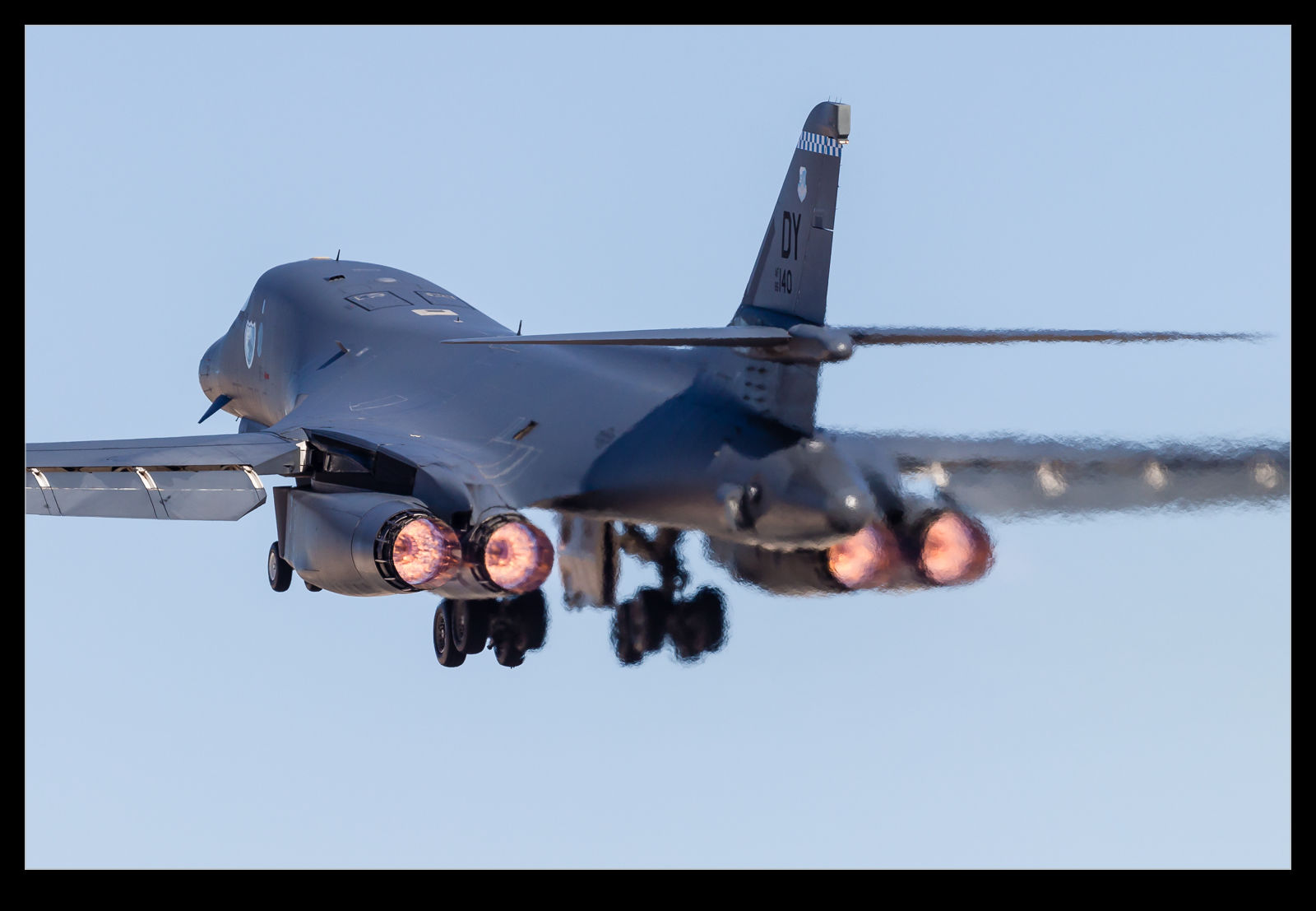 The B-1B Lancer is a cracking aircraft. The combination of size and power makes it look epic when it is in action. A B-1 departure is not something that you will forget in a hurry. Four large afterburning turbofans will get your attention and it has a very elegant shape to boot. The variable sweep wings add a little interest too. At minimum sweep for takeoff and landing, they look a little ungainly given how long the span is. Put them all the way back and pour on the coals and the jet can really get moving. Sadly, airshow appearances are few and far between these days so the chance to see vapor clouds forming around the jet are limited. (I recently went through some old negatives from a UK airshow at which a B-1 made a fast pass in damp conditions. The shots aren’t great but the effect is cool.)
The B-1B Lancer is a cracking aircraft. The combination of size and power makes it look epic when it is in action. A B-1 departure is not something that you will forget in a hurry. Four large afterburning turbofans will get your attention and it has a very elegant shape to boot. The variable sweep wings add a little interest too. At minimum sweep for takeoff and landing, they look a little ungainly given how long the span is. Put them all the way back and pour on the coals and the jet can really get moving. Sadly, airshow appearances are few and far between these days so the chance to see vapor clouds forming around the jet are limited. (I recently went through some old negatives from a UK airshow at which a B-1 made a fast pass in damp conditions. The shots aren’t great but the effect is cool.)
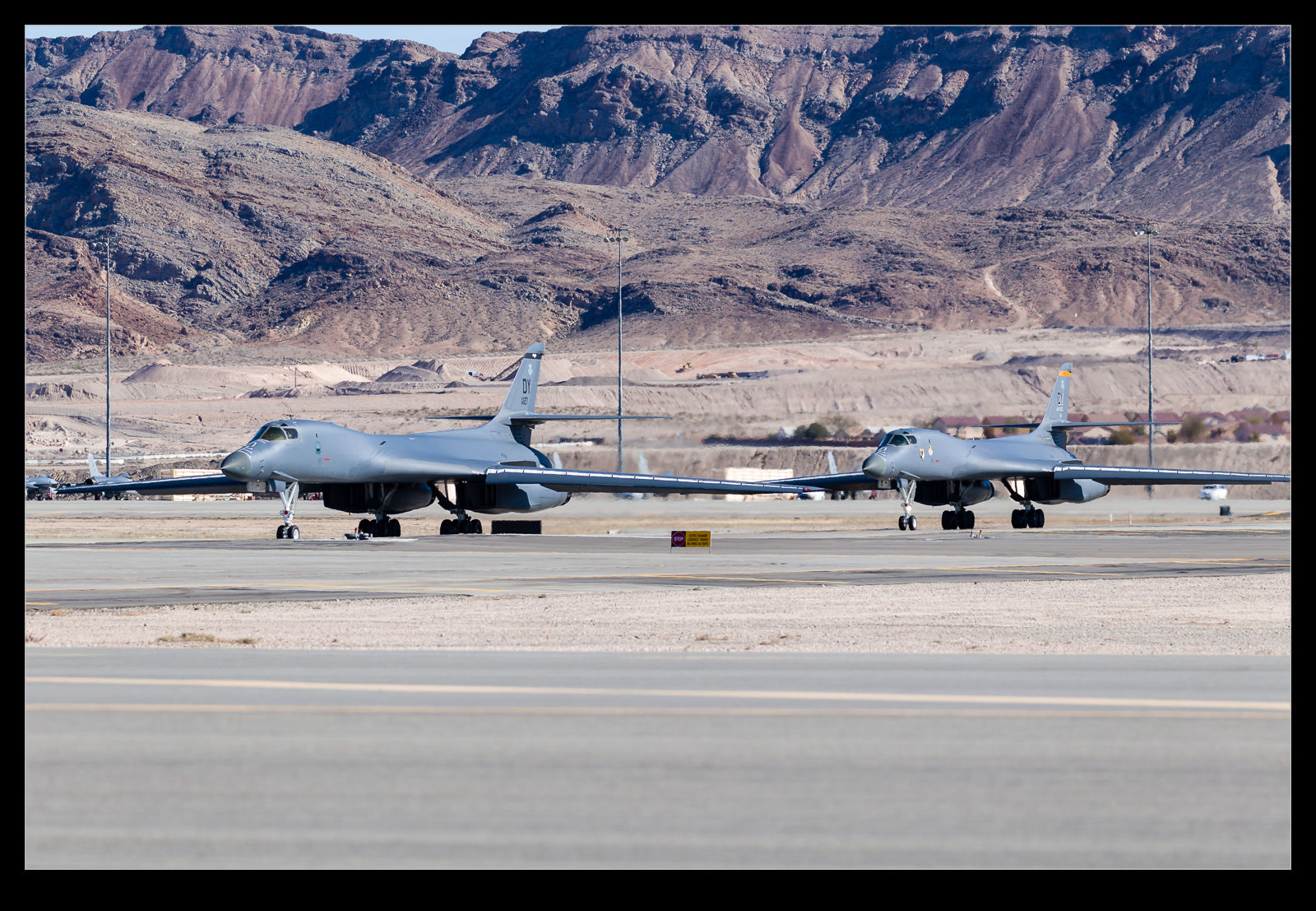 A couple of B-1s would launch each day as part of the Red Flag 16-1 exercises. I was lucky enough to have a couple of good opportunities to see then. When we were out between the runways, the B-1s launched off the right side. Not ideal for lighting but you aren’t going to complain. Because they are a large jet, you have to make some choices with lenses as to what you are aiming to get. A quick swap of bodies can really help. A long lens is not much use when they are level with you but the cool shot from behind as they climb out benefits from the big glass.
A couple of B-1s would launch each day as part of the Red Flag 16-1 exercises. I was lucky enough to have a couple of good opportunities to see then. When we were out between the runways, the B-1s launched off the right side. Not ideal for lighting but you aren’t going to complain. Because they are a large jet, you have to make some choices with lenses as to what you are aiming to get. A quick swap of bodies can really help. A long lens is not much use when they are level with you but the cool shot from behind as they climb out benefits from the big glass.
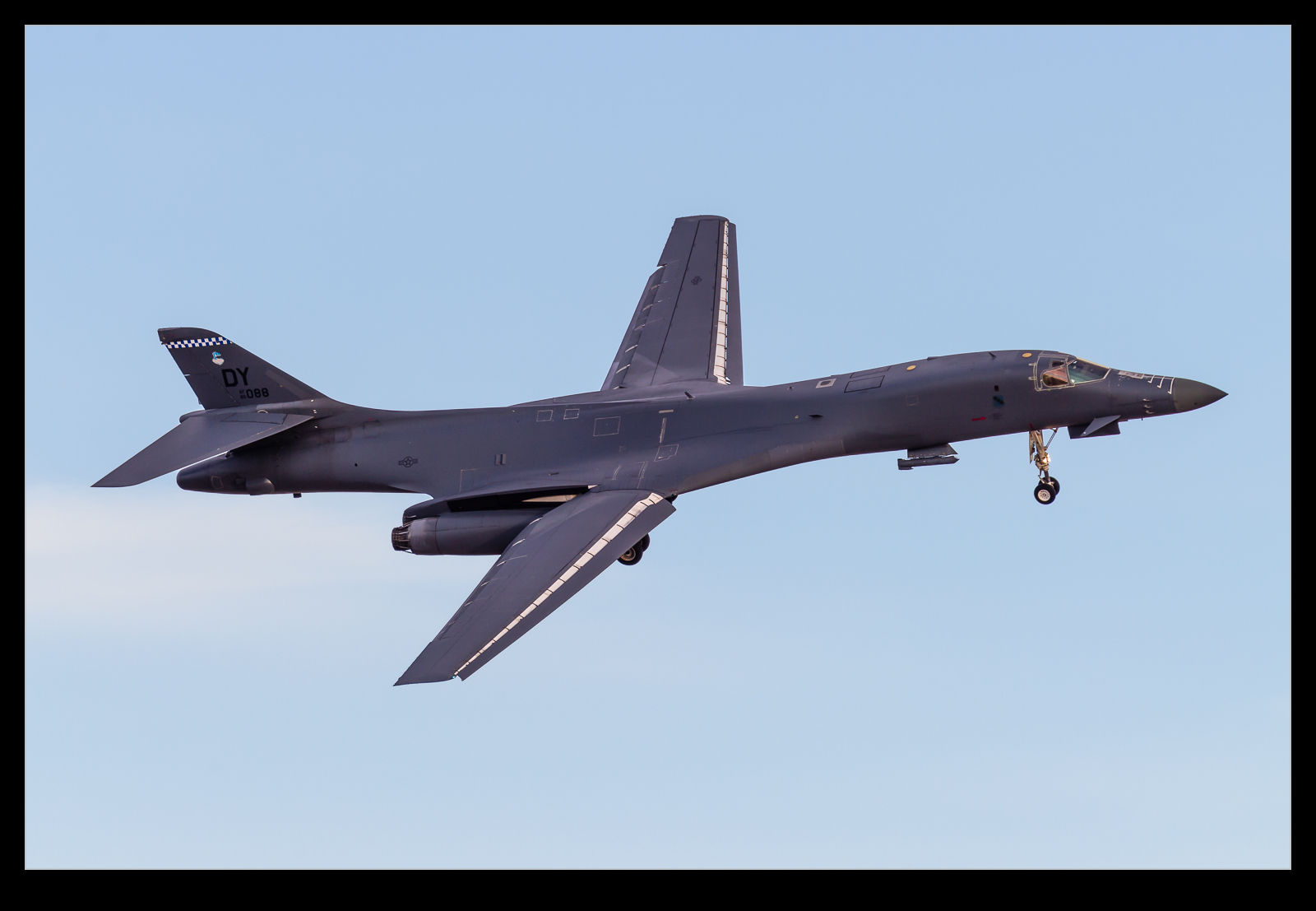 On my first day there, the jets returned at the end of the mission as a pair. Sadly, the clouds had moved in and the conditions were not great for getting a shot. However, you aren’t going to ignore them. On the second day when I was at the EOR, we got a good view of the two jets taxiing out and taking off. The heat haze is a bit of a problem but not so much as to make it something you can avoid shooting. Operating as a pair, they look more menacing.
On my first day there, the jets returned at the end of the mission as a pair. Sadly, the clouds had moved in and the conditions were not great for getting a shot. However, you aren’t going to ignore them. On the second day when I was at the EOR, we got a good view of the two jets taxiing out and taking off. The heat haze is a bit of a problem but not so much as to make it something you can avoid shooting. Operating as a pair, they look more menacing.
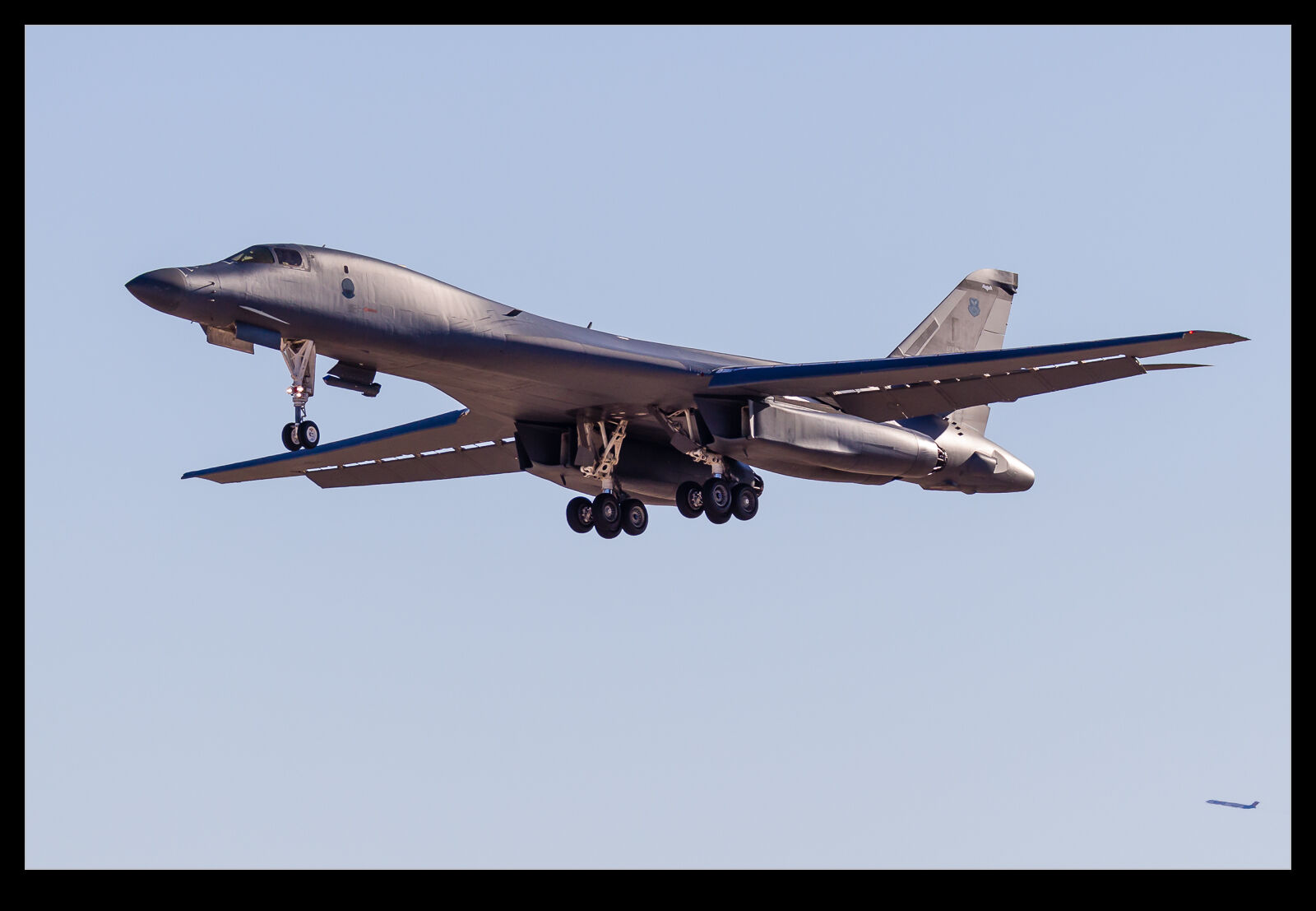 Often the B-1s are at the end of the recovery phase. However, on this day, they came back relatively early. I was still at the EOR when they broke into the pattern. They did land on the opposite runway from the one we were at but they are big enough for this to not be a big deal. A nice bit of mountain in the background certainly helps enhance the shot a little. What a great looking jet. I don’t know anyone who isn’t excited when they see one in action.
Often the B-1s are at the end of the recovery phase. However, on this day, they came back relatively early. I was still at the EOR when they broke into the pattern. They did land on the opposite runway from the one we were at but they are big enough for this to not be a big deal. A nice bit of mountain in the background certainly helps enhance the shot a little. What a great looking jet. I don’t know anyone who isn’t excited when they see one in action.
- A USAF B-1B Lancer on final approach to Nellis AFB Las Vegas Nevada as part of a Red Flag mission.
- A USAF B-1B Lancer on final approach to Nellis AFB Las Vegas Nevada as part of a Red Flag mission.
- A USAF B-1B Lancer overflies Nellis AFB Las Vegas Nevada prior to breaking into the pattern to land after a Red Flag mission.
- Two USAF B-1B Lancers approach the break at Nellis AFB Las Vegas Nevada after a Red Flag mission.
- A Boeing B-1B Lancer of the USAF takes off from Nellis AFB Las Vegas Nevada on a Red Flag Mission.
